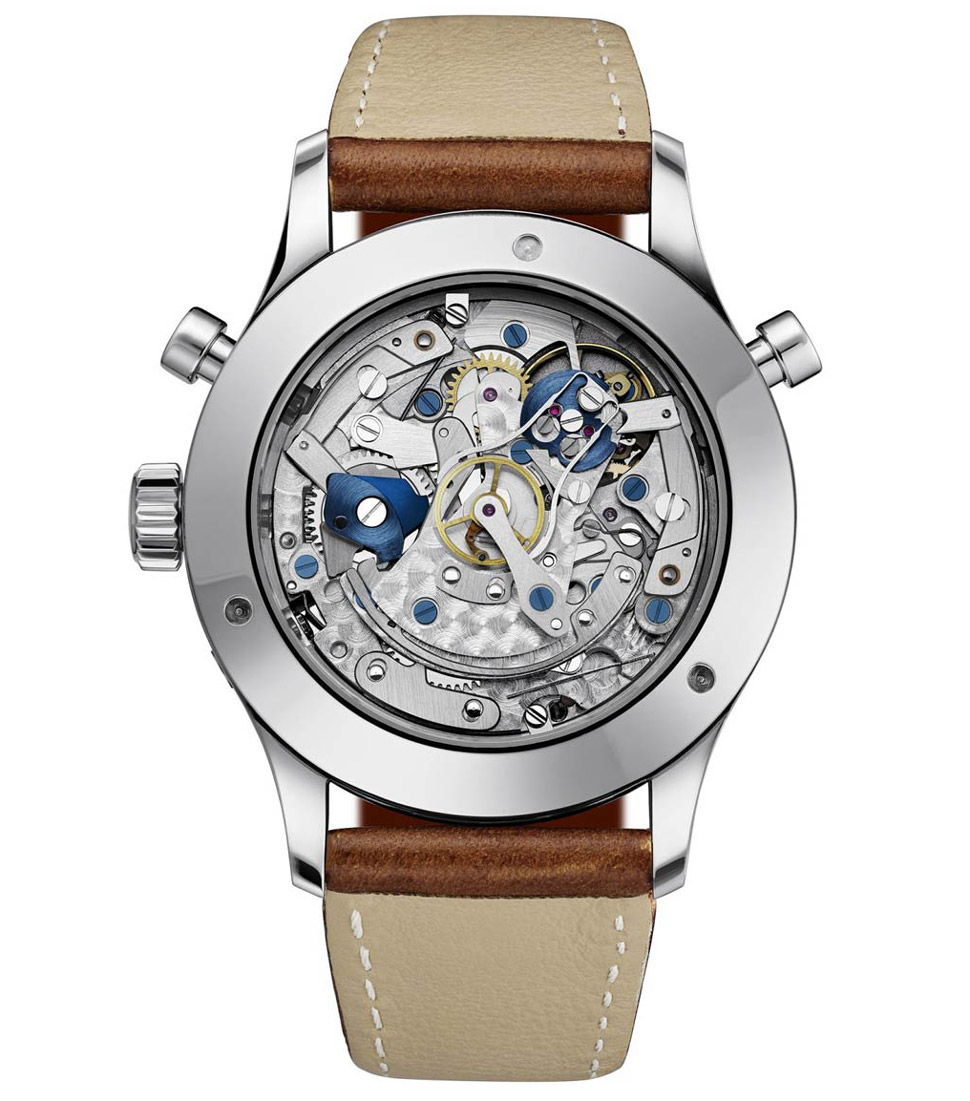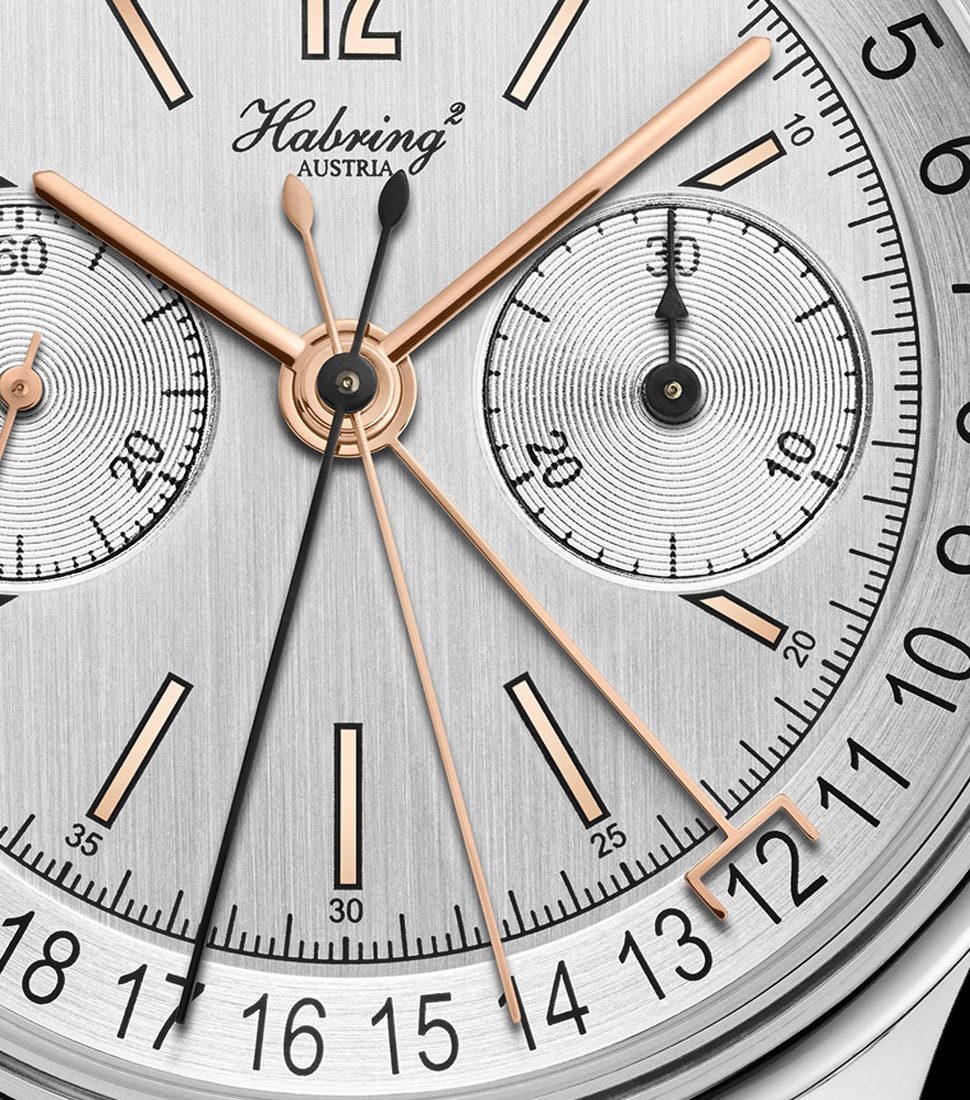Welcome to “Watches You Should Know,” a new bi-weekly (the once-every-two-weeks kind) column highlighting little-known watches new and old that have interesting stories or have had a surprising impact on the industry.
Amongst watchmaking’s hierarchy of complications, many consider the rattrapante (French, roughly, for “catch up”) chronograph and its ability to measure two timing intervals simultaneously near the top. It’s a rare beast, historically manufactured by the hottest of the haute horlogerie brands (think A. Lange & Söhne and Patek Philippe) due to both its mechanical complexity and the incredible amount of skill it takes to assemble and adjust it. That was the case, at least, until 1993.
It was in that year that IWC released the Doppelchrongoraph, an exceptionally affordable version of the complex chronograph movement. Spearheaded by watchmaker Richard Habring, the Doppelchrongoraph brought the high-end functionality to the relatively humble Valjoux 7750 in the form of a module. On a traditional rattrapante, the split-seconds function is achieved through two “column wheel” actuators activated by three pushers in the case (one for the stop and start, one for the reset mechanism the third for the slipt-seconds hand).
The column wheel is itself tricky to manufacture, so the inclusion of two of them naturally adds to the cost and complexity of the rattrapante’s manufacture. However, the Valjoux 7750 doesn’t use a column wheel in the first place, but rather a simpler cam lever system. Habring utilized this, as well as an additional cam mechanism to control the split-second function, to create a simple, cheap and relatively easy-to-produce rattrapante movement.

Habring eventually left IWC and started his own independent watch brand with his wife Maria in 2004, though it wouldn’t be until 2012 when they produced a rattrapante under the Habring² brand name after IWC’s patent on the innovation expired. The Habring² Doppel 2.0 borrowed the same watchmaking principles and underlying architecture (including the 7750 base) as the IWC form the ’90s, though it ditched the automatic winding and features Habring’s own styling. The result was a watch that was impressive enough to garner a win at that year’s Grand Prix d’Horlogerie de Genevé.
Then came the Doppel 3.0. The 3.0 carried over much of the same movement developments from the 2.0, but Habring² distilled the chronograph’s stop, start and reset function into one pusher, reducing the overall pushers from three to two. Then, earlier this year, Habring² unveiled the Doppel-Felix. It too built on the Doppel before it, but now features a movement developed and produced in-house and no longer relies on the base ETA 7750 movement.
According to an interview with Hodinkee, Richard Habring says the new A11R movement borrows much of the basic architecture as the 7750, but adds some modifications, and features parts either manufactured by Habring² or supplied by parts makers in Germany. The development of the in-house movement, according to Habring, was a response to a letter from ETA telling him they would no longer supply him with movements or even spare parts.

Mechanically, the Doppel-Felix’s existence is a testament to the Habring’s skill as independent watchmakers (Habring²’s overall yearly output is in the dozens), but the fact remains that the couple also built a watch that’s beautiful externally, as well. The Doppel is available with beautifully-finished dials (including an especially pretty brushed silver) adorned with rose gold accents. You can even specify a pointer date complication if you like. And for all this splendor, you’ll spend less than $10,000.
This is kind of incredible, actually. Most Rattrapante watches, even IWC’s current iteration, sell for at least a couple thousand dollars more than this. So the Doppel-Felix, at least in the realm of high-end watchmaking, is a bargain. But it’s also a physical embodiment of a small watchmaker’s ingenuity and dedication to the craft which, is the real draw here in the end.

